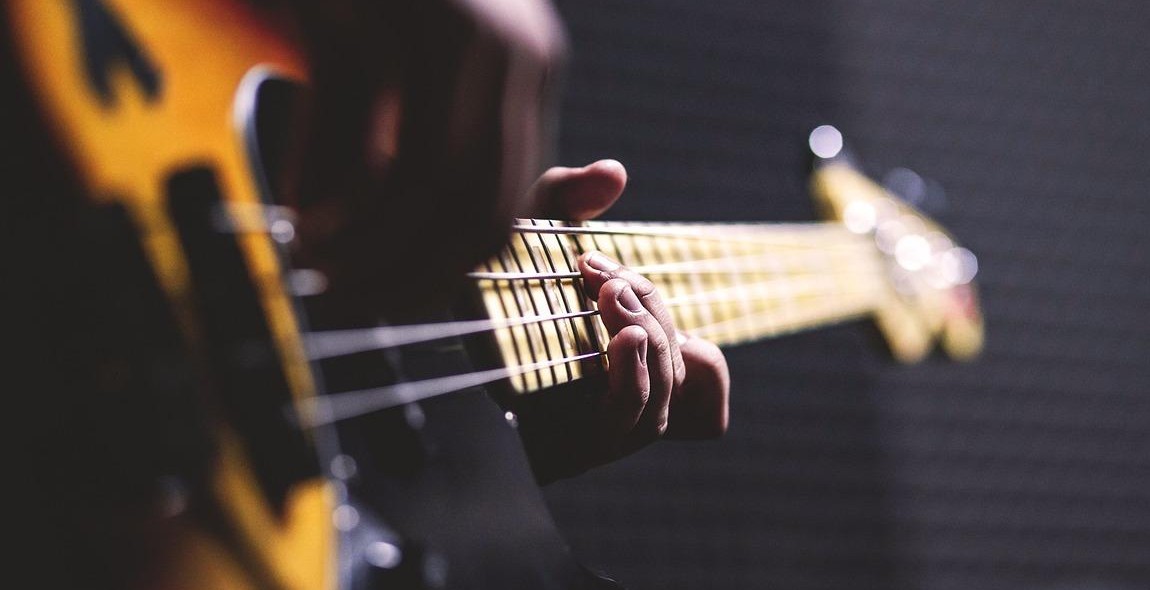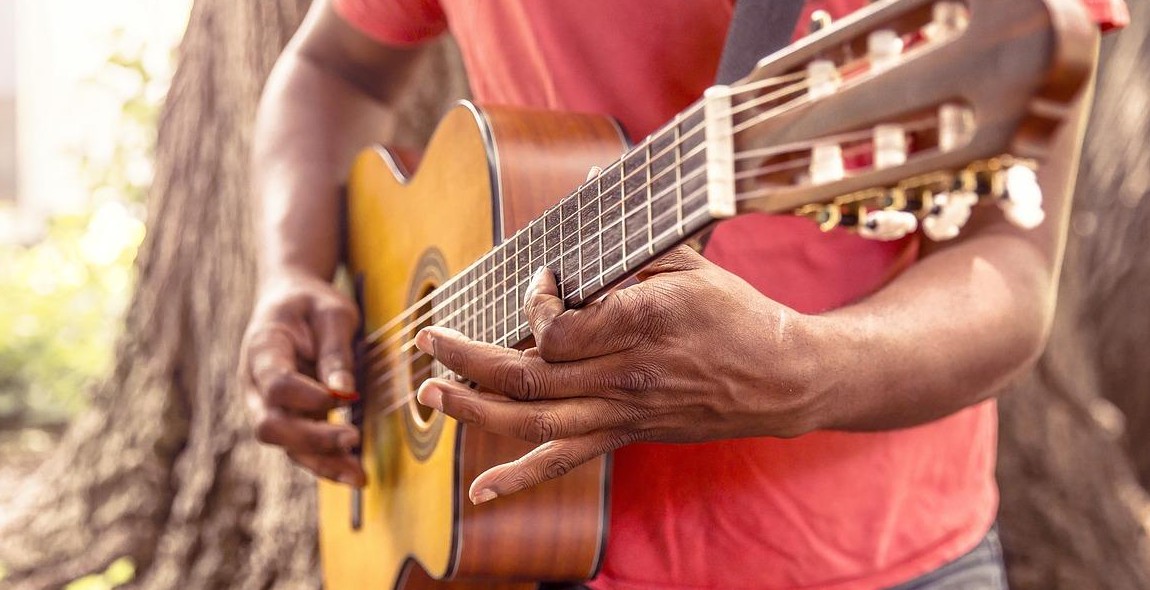How to Play the Guitar: Beginner’s Guide to Chords, Strumming, and Basic Songs
Learning to play the guitar is an exciting and rewarding experience. Whether you are looking to pick up a new hobby or pursue a career in music, mastering the guitar can be a fulfilling journey. However, for beginners, the process can be daunting and overwhelming. With so many chords, strumming patterns, and songs to learn, it can be challenging to know where to start.
The Benefits of Learning the Guitar
Beyond the joy of creating music, learning the guitar has numerous benefits. Studies have shown that playing an instrument can improve cognitive function, memory, and even reduce stress levels. Additionally, playing the guitar can enhance creativity and provide a sense of accomplishment.
What to Expect in This Beginner’s Guide
In this beginner’s guide, we will cover the basics of playing the guitar. You will learn how to read chord diagrams, strumming patterns, and play some basic songs. We will also provide tips on how to practice effectively and troubleshoot common mistakes. By the end of this guide, you will have a solid foundation to build upon as you continue your guitar journey.
Table of Contents
- Section 1: Understanding Chords
- Section 2: Mastering Strumming Patterns
- Section 3: Learning Basic Songs
- Section 4: Tips for Effective Practice
- Section 5: Troubleshooting Common Mistakes
Choosing the Right Guitar
Choosing the right guitar is crucial for beginner guitar players. The two most popular types of guitars are acoustic and electric. Acoustic guitars produce sound through the vibration of the strings, while electric guitars use pickups to convert the vibration of the strings into an electrical signal that is amplified through an amplifier.
Acoustic vs. Electric
Acoustic guitars are generally recommended for beginners because they are more affordable and do not require additional equipment, such as amplifiers. They are also portable and can be played anywhere without the need for electricity. However, electric guitars are easier to play because of their thinner necks and lower string action, which means the strings are closer to the fretboard. Electric guitars also provide a wider range of sounds and effects, making them more versatile for different styles of music.
Guitar Sizes and Shapes
Guitar sizes and shapes can vary, and it is important to choose a guitar that feels comfortable to play. Full-sized guitars are recommended for adults, while smaller sizes are available for children and beginners with smaller hands. The shape of the guitar can also affect its playability. For example, dreadnought-shaped guitars have a wider body and produce a louder sound, while concert-shaped guitars have a smaller body and produce a more balanced sound.
Brands and Budgets
Choosing a guitar from a reputable brand is important for quality and durability. Some popular guitar brands for beginners include Yamaha, Fender, and Epiphone. It is also important to consider your budget when choosing a guitar. A beginner can find a decent acoustic guitar for around $100-$200, while electric guitars can range from $150-$500 for a beginner model.
| Acoustic | Electric |
|---|---|
| More affordable | Easier to play |
| No additional equipment needed | Provides a wider range of sounds and effects |
| Portable and can be played anywhere | Requires an amplifier for optimal sound |
Basic Guitar Anatomy
Before you start playing the guitar, it’s important to familiarize yourself with the different parts of the instrument. Here’s a breakdown of the basic guitar anatomy:
| Headstock: | The top part of the guitar where the tuning pegs are located. |
| Tuning Pegs: | The small knobs on the headstock used to tighten or loosen the strings for tuning. |
| Nut: | A small piece located at the top of the fretboard that separates the tuning pegs from the fretboard and helps keep the strings in place. |
| Fretboard: | The long, thin piece of wood attached to the neck that contains the frets. |
| Frets: | The metal strips that run perpendicular to the strings on the fretboard. Pressing down on a string behind a fret produces a different note than playing the string open. |
| Neck: | The long, thin piece of wood that extends from the body of the guitar and holds the fretboard. |
| Body: | The main part of the guitar that contains the sound hole, pickups, and controls. |
| Bridge: | The piece located on the body of the guitar that holds the strings in place and transfers their vibrations to the soundboard. |
Tuning Your Guitar
Before you start playing, you’ll need to make sure your guitar is properly tuned. Here’s a basic guide to tuning your guitar:
- Start by turning the tuning pegs on the headstock to loosen the strings.
- Use a tuner or tuning app to help you get each string to the correct pitch.
- Tighten or loosen the strings as needed until they are all in tune.
It’s important to tune your guitar regularly to ensure it sounds its best and to avoid damaging the instrument or causing unnecessary strain on the strings.

Learning Chords
Learning chords is an essential part of playing the guitar. Chords are groups of notes that are played together to create a harmonious sound. In this section, we will cover three types of chords: open chords, barre chords, and power chords.
Open Chords
Open chords are the easiest chords to learn and are played in the first three frets of the guitar. They are called open chords because they use open strings. Some examples of open chords are C, D, G, E, and A. These chords are used in many popular songs and are a great starting point for beginners.
Barre Chords
Barre chords are more challenging than open chords, but they allow you to play a wider range of chords. Barre chords are played by using one finger to hold down multiple strings across the guitar neck. The most common barre chord shape is the F chord. To play an F chord, you need to barre the first fret with your index finger and use your other fingers to hold down the remaining strings. With practice, barre chords become easier to play.
Power Chords
Power chords are commonly used in rock and metal music. They are played using only two or three notes and are a simplified version of a full chord. Power chords are played using the root note and the fifth or the root note and the octave. They can be played anywhere on the guitar neck and are a great way to add some crunch to your playing.
| Chord Progression | Example Songs |
|---|---|
| I-IV-V | Johnny B. Goode by Chuck Berry, Wild Thing by The Troggs |
| I-V-vi-IV | Don’t Stop Believin’ by Journey, Someone Like You by Adele |
| vi-IV-I-V | Let Her Go by Passenger, Hallelujah by Jeff Buckley |
Learning chords takes time and practice, but it is essential to becoming a proficient guitar player. Start with open chords and work your way up to barre chords and power chords. Practice chord progressions to become comfortable with changing chords quickly. With dedication and practice, you will be playing your favorite songs in no time!

Strumming Patterns
One of the most important aspects of playing the guitar is mastering different strumming patterns. Strumming patterns can make a basic chord progression sound interesting and dynamic.
Downstroke and Upstroke
The two basic types of strumming are downstrokes and upstrokes. A downstroke is when you strum the strings in a downward motion, while an upstroke is when you strum the strings in an upward motion. When you combine these two motions, you create a strumming pattern.
Rhythm and Timing
When you strum, it’s important to keep a steady rhythm and timing. This means that you strum at a consistent pace and in time with the music. To improve your rhythm and timing, practice with a metronome or drum machine.
Strumming Exercises
Here are some strumming exercises to help you improve your technique:
- Down-Up Strumming: Alternate between downstrokes and upstrokes at a steady pace.
- Single-String Strumming: Practice strumming each string individually to improve your accuracy and dexterity.
- Strumming Patterns: Practice different strumming patterns, such as the popular “down-down-up-up-down-up” pattern.
Remember to start slow and gradually increase your speed as you become more comfortable with each exercise. With practice, you’ll be able to strum confidently and add your own personal style to your playing.
Basic Songs to Learn
Learning to play basic songs on the guitar is a great way to build your skills and confidence. Here are three classic songs that are perfect for beginners:
Three Little Birds by Bob Marley
This reggae classic is a great song to work on your strumming and chord changes. The song uses just three chords – A, D, and E – and has a simple, catchy melody that’s easy to sing along to. Try practicing the chords and strumming pattern separately before putting them together. Once you’ve got the hang of it, you’ll be singing “Don’t worry about a thing, ’cause every little thing gonna be all right” in no time.
Wonderwall by Oasis
This iconic 90s tune is a must-learn for any aspiring guitarist. The song uses four chords – Em, G, D, and A – and has a simple strumming pattern that repeats throughout the song. The verses and chorus have different chord progressions, so make sure to practice each part separately before putting them together. Once you’ve mastered the chords, try singing along to the catchy lyrics and impress your friends at the next campfire.
Knockin’ on Heaven’s Door by Bob Dylan
This classic rock song is a great choice for beginners who want to practice their fingerpicking. The song uses four chords – G, D, Am, and C – and has a simple fingerpicking pattern that repeats throughout the song. Try practicing the pattern slowly at first and gradually increase your speed. Once you’ve got the hang of it, you’ll be able to play the song’s iconic melody while singing “Mama, take this badge off of me, I can’t use it anymore.”
| Song | Artist | Chords Used |
|---|---|---|
| Three Little Birds | Bob Marley | A, D, E |
| Wonderwall | Oasis | Em, G, D, A |
| Knockin’ on Heaven’s Door | Bob Dylan | G, D, Am, C |
Conclusion
Learning how to play the guitar can be a challenging but rewarding experience. By following the steps outlined in this beginner’s guide, you should be well on your way to becoming a proficient guitarist.
Remember to Practice
Practice is the key to becoming a successful guitarist. Make sure to set aside time each day to practice your chords and strumming. It may seem difficult at first, but with consistency and dedication, you will see improvement.
Find a Teacher or Join a Community
Having a teacher or joining a guitar community can provide valuable feedback and support. You can learn from experienced players and get tips on how to improve your technique.
Explore Different Genres and Songs
Don’t be afraid to experiment with different genres and songs. This will help you develop your own style and expand your musical knowledge.
Invest in a Quality Guitar
Investing in a quality guitar can make a big difference in your playing. Look for a guitar that feels comfortable and suits your style and budget.
By following these tips and putting in the effort, you can become a skilled guitarist and enjoy the many benefits that come with playing music.
